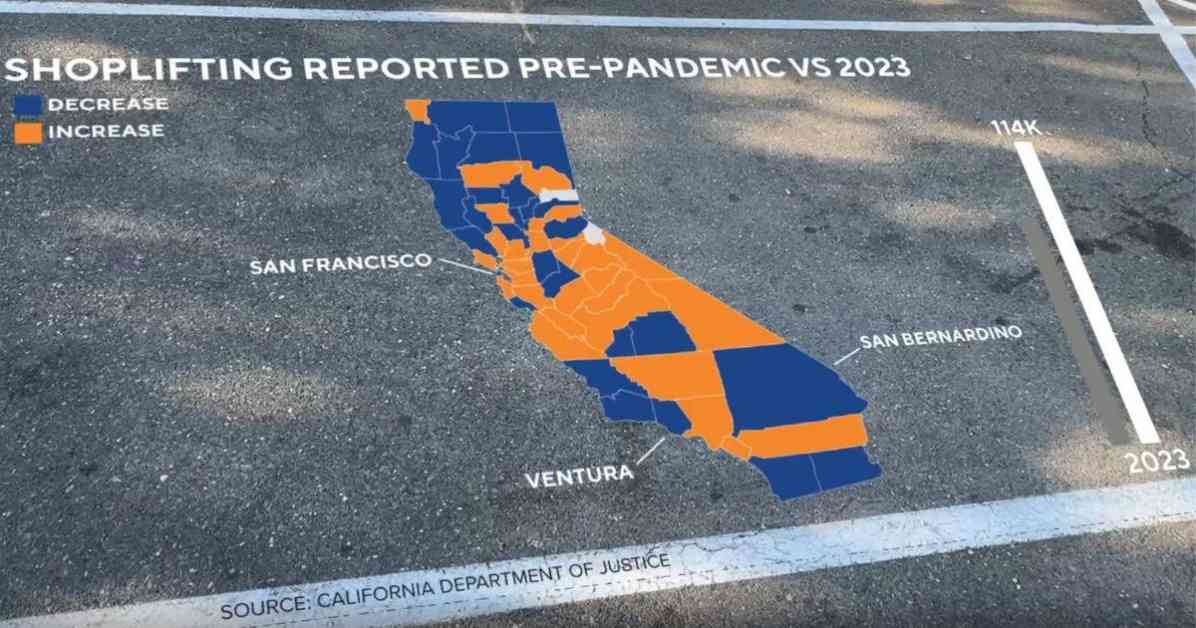Retail crime in California has been a growing concern, with data showing an increase in incidents over the past few years. Proposition 36, also known as The Homeless, Drug Addiction, and Theft Reduction Act, is a high-profile ballot measure aimed at addressing these issues. While some argue that the rise in retail crime is due to lesser consequences and a lower chance of getting caught, others point to the impact of the COVID-19 pandemic.
According to data from the California Department of Justice, statewide retail crime reached its highest levels in two decades in 2023, with about 213,000 reported incidents. Shoplifting and commercial robbery were at their highest levels since 1997, with reported shoplifting crimes increasing by about 2% from the five years before Proposition 47 was passed to the five years after.
The rise in retail crime is not uniform across all counties, with some seeing an increase while others saw a decrease. Larger, more populated counties like Sacramento, Alameda, San Mateo, and Los Angeles saw significant jumps in retail crime, accounting for over 90% of the statewide increase.
Supporters of Proposition 36 argue that the ballot measure is needed to address the unintended consequences of Proposition 47, which made hard drug possession and theft under $950 misdemeanors instead of felonies. Under Proposition 36, repeat offenders would face harsher penalties, with a third conviction becoming a felony. This, supporters argue, would incentivize officers to make arrests and create a greater deterrent for serial thieves.
Critics of Proposition 36, however, point to a decrease in theft clearance rates as a key factor in the rise of retail crime. Clearance rates dropped after Proposition 47 was passed, with the statewide clearance rate for thefts at about 8% in 2023. Critics argue that theft is up because “no one is being arrested,” and that Proposition 36 won’t change that.
The impact of the COVID-19 pandemic on retail crime is also a topic of discussion, with some studies suggesting that the pandemic had a stronger impact than Proposition 47. The pandemic led to a decrease in jail populations and clearance rates, which in turn contributed to a rise in retail crime.
Overall, the debate around retail crime in California is complex, with various factors contributing to the rise in incidents. Proposition 36 is one proposed solution to address these issues, but the effectiveness of the ballot measure remains to be seen. As stakeholders continue to grapple with the challenges of retail crime, finding a comprehensive and effective solution will be crucial in ensuring the safety and security of businesses and communities across the state.






















